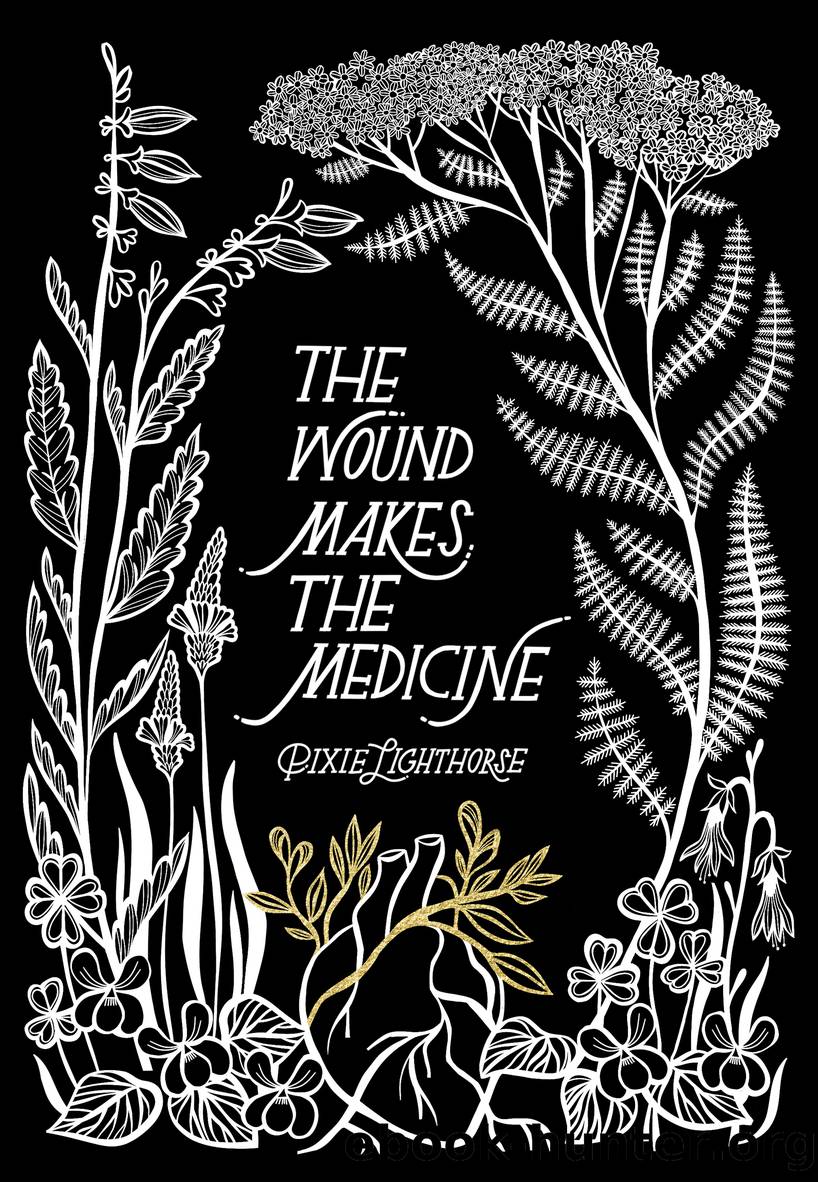The Wound Makes the Medicine by Pixie Lighthorse

Author:Pixie Lighthorse
Language: eng
Format: epub
Publisher: Row House Publishing
Published: 2023-12-12T00:00:00+00:00
I belong with others and I belong in my lonelinessâI belong in all ways.
STILLING OUR SYSTEM
TRAUMA IS DESCRIBED AS TOO much happening too fast for the nervous system to metabolize. Each of us has different levels of tolerance for events, differences in how we perceive adverse experiences, and varying levels of emotional confusion based on our early development. When we do not feel safe, especially when we should feel safe, violations cause bewilderment.
When my traumas are triggeredâespecially when Iâm navigating heartbreakâI experience brain fog and adrenaline surges wherein my whole body feels activated. Motor skills start to sputter. A torrent of unexpected emotions and sensations overcomes an activated body, which makes unconscious and sometimes rapid decisions to freeze, appease, flee, or fight. Hopelessness is a disheartening effect of experiencing frequent triggers within relationships.
If we think of our emotions as bodies of waterâsmooth and glassy when things are going well, and choppy and stormy when agitatedâhopelessness might be a small, stagnant pond in which sorrows sit untended. Creating movement from this place is difficult. When the gloom of heartbreak is compounded by activated traumas, we can find ourselves in desperate states.
What has helped me most is not judging my hopelessness. When we can accept that emotional states are transient, this can create conditions for surrender and eventual mobilization. Lingering in small, dank ponds is not where we feel we can afford to hang out for too long.
I have a child who experiences frequent hopelessness. This child expects so much of the self, and this creates pressure to do something at a time when there is little energy for doing. Trusting the process is part of what helps. Explaining this to an angsty teenagerâor the angsty teenager withinâis often a losing battle. However, I think of the quiet, still-pond state as necessary for healing. If we do not know hopelessness, how will we know hope?
Being still requires patience with our humanness, which we are still figuring out how to allow. Fear of sinking too low beyond the point of no return is real. If I imagine my body as a cool, still, immobilized pool, can I gently look around from that state and let my vision take in the landscape? Iâm asking my mind, which is scared, to connect with my heart, which is sad. I can attune to how my own sadness scares me. We are frightened of how sad we can sometimes feel. When we arenât able to distract from or control how sad we feel, the only option is to be with it. We can bear more water than we believe we can. We can still our systems by allowing and giving grace to how afraid we are of how we feel.
Download
This site does not store any files on its server. We only index and link to content provided by other sites. Please contact the content providers to delete copyright contents if any and email us, we'll remove relevant links or contents immediately.
| Grief & Bereavement | Hospice Care |
| Pet Loss | Suicide |
They Both Die at the End by Adam Silvera(8613)
Thirteen Reasons Why by Jay Asher(7791)
The Space Between by Michelle L. Teichman(6088)
Suicide Notes by Michael Thomas Ford(4274)
Tuesdays with Morrie by Mitch Albom(3833)
Suicide: A Study in Sociology by Emile Durkheim(2611)
The Checklist Manifesto by Atul Gawande(2204)
Tuesdays With Morrie by Mitch Albom(2173)
Robin by Dave Itzkoff(2007)
In the Woods by Tana French(1999)
Bossypants by Tina Fey(1987)
No Ashes in the Fire by Darnell L Moore(1982)
Reservoir 13 by Jon McGregor(1853)
End of Days by Sylvia Browne(1826)
Olive Kitteridge by Elizabeth Strout(1791)
Bus on Jaffa Road by Mike Kelly(1785)
All Things New by John Eldredge(1783)
Scar Tissue by Anthony Kiedis(1771)
No Time to Say Goodbye(1760)
